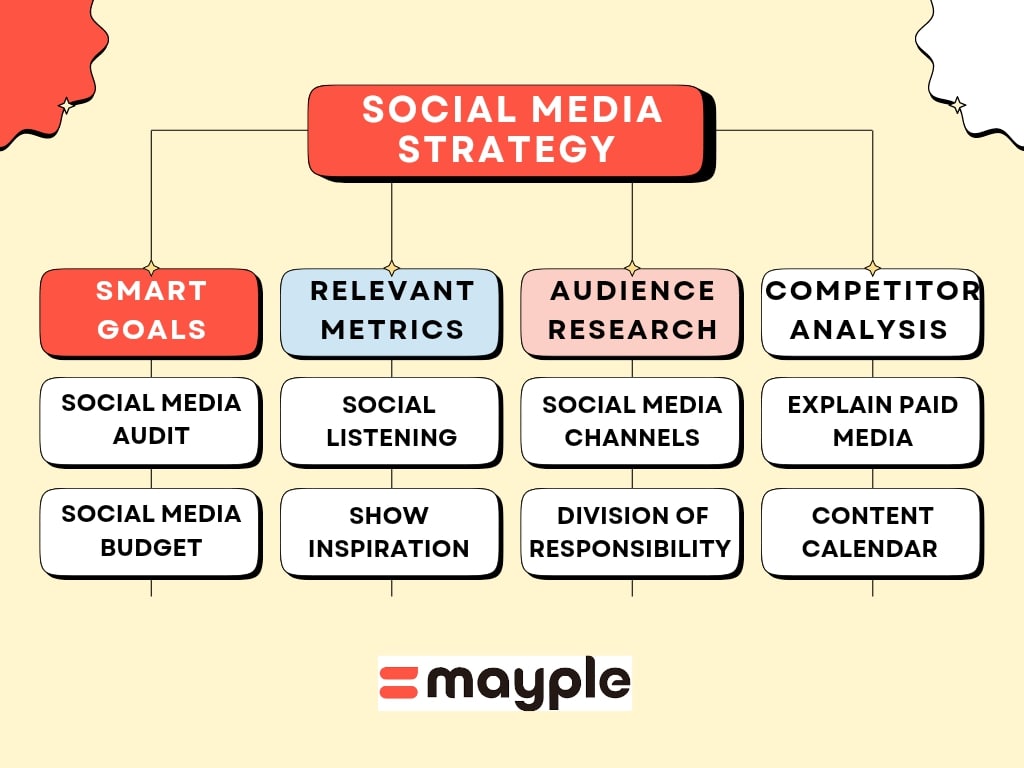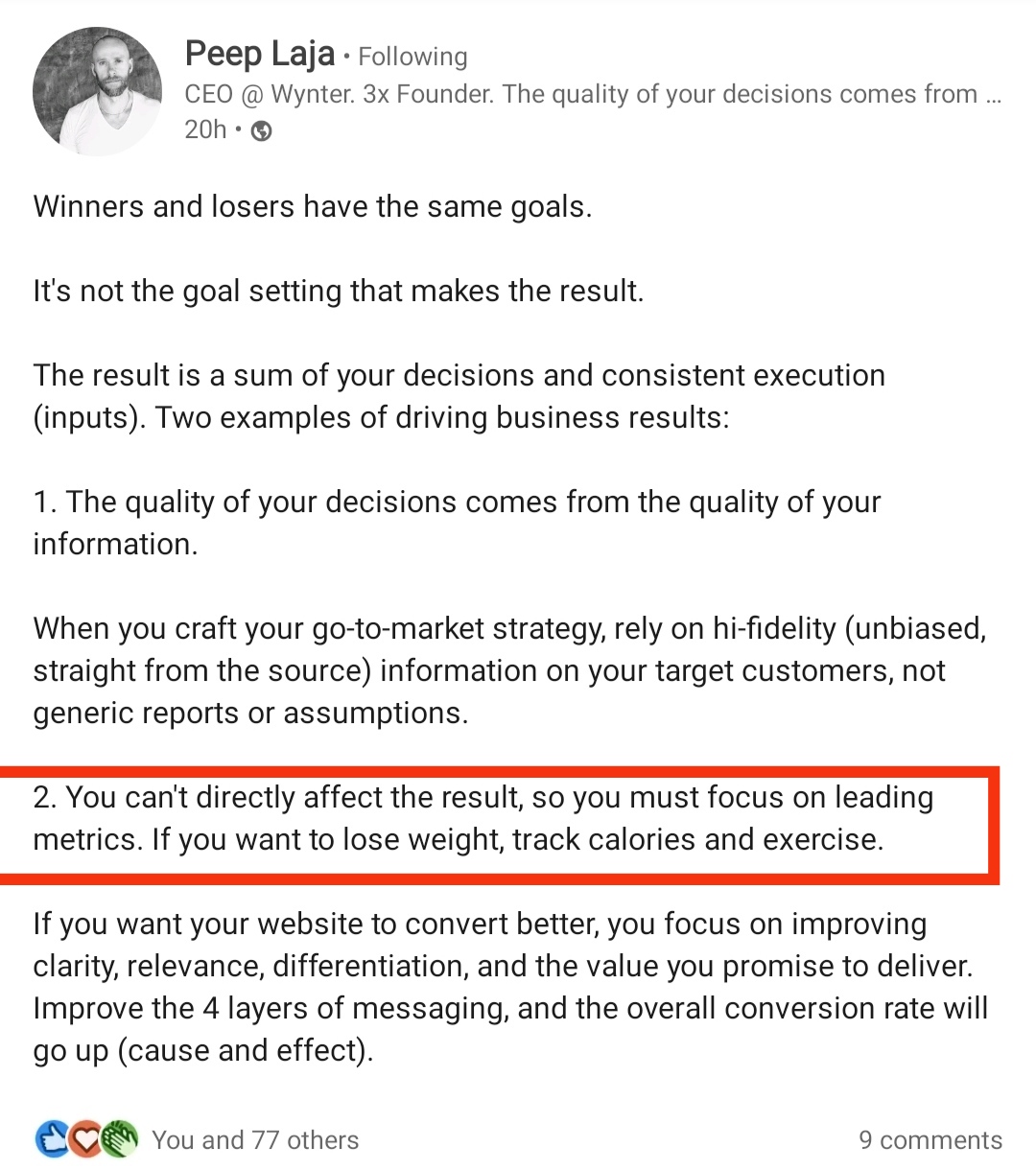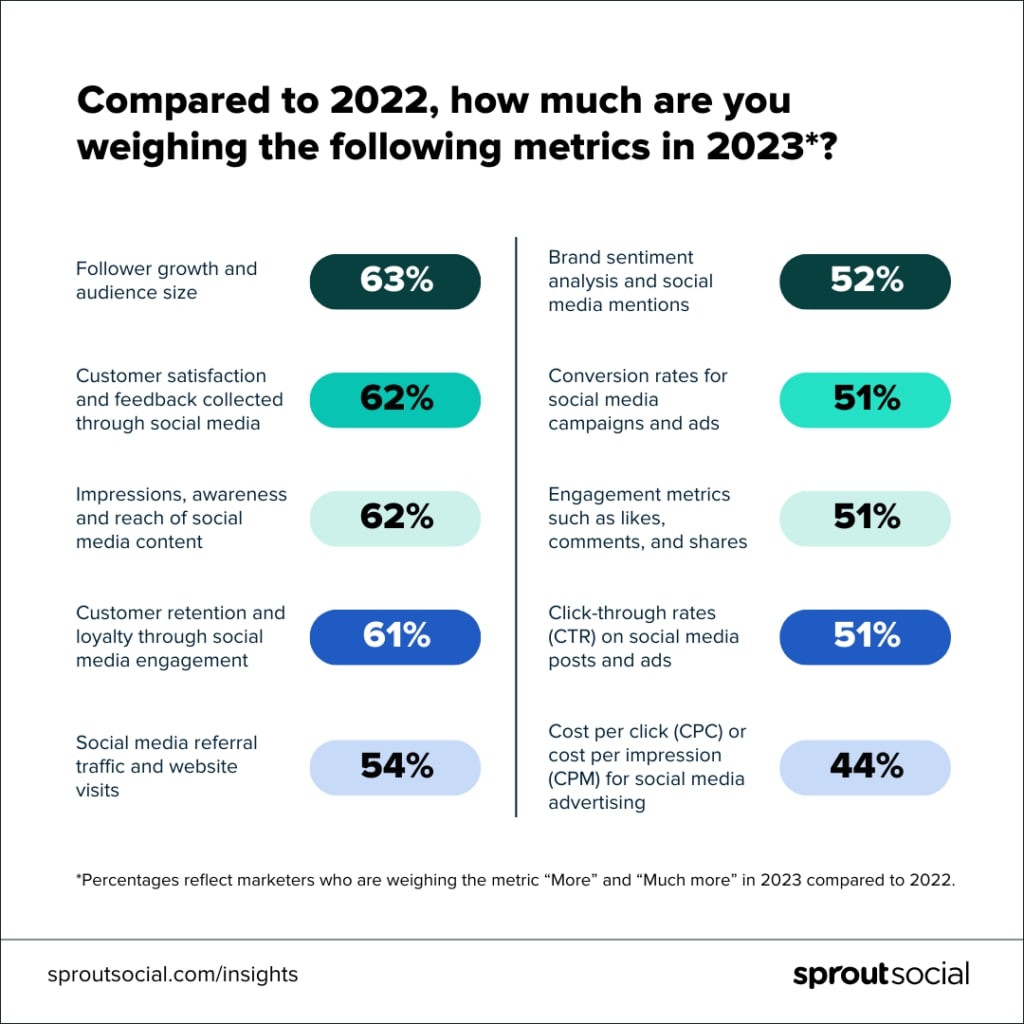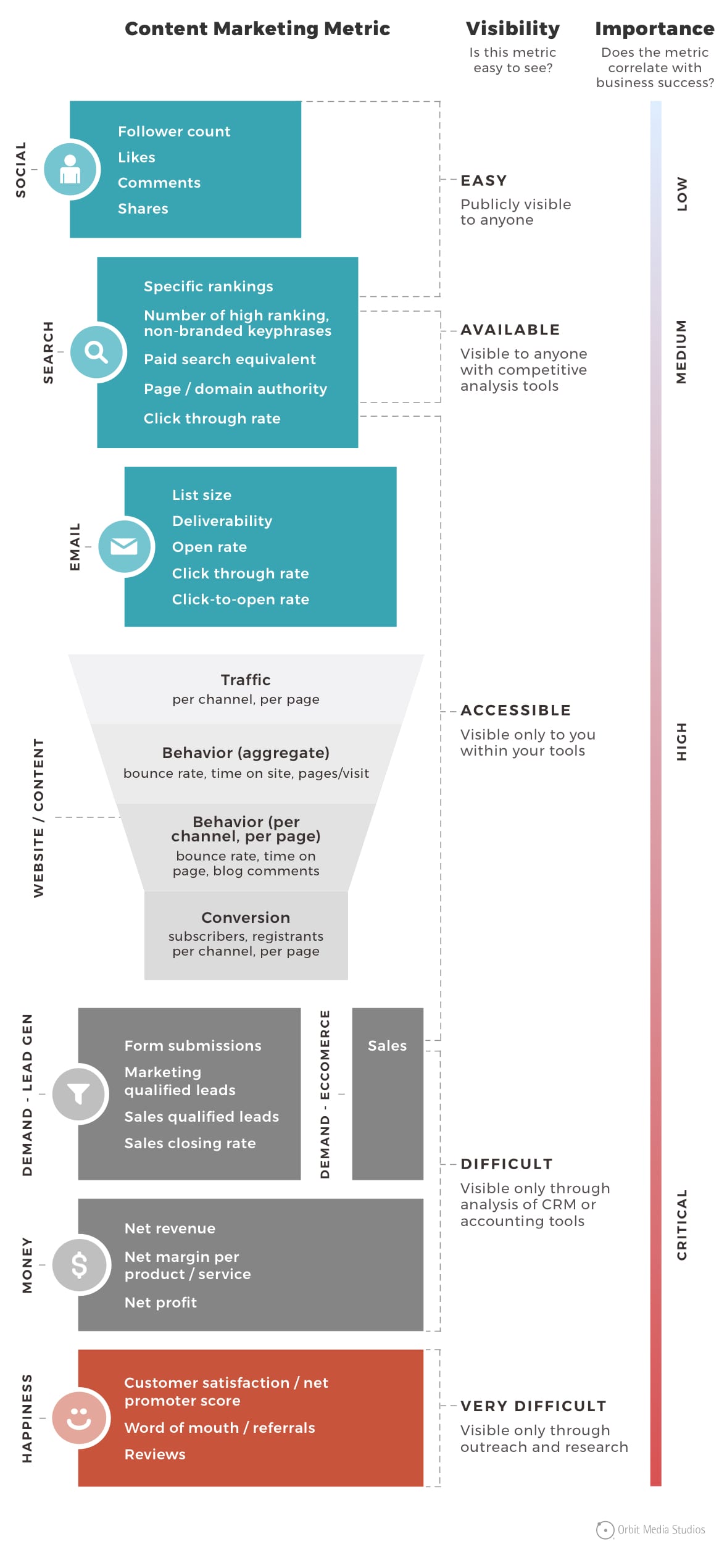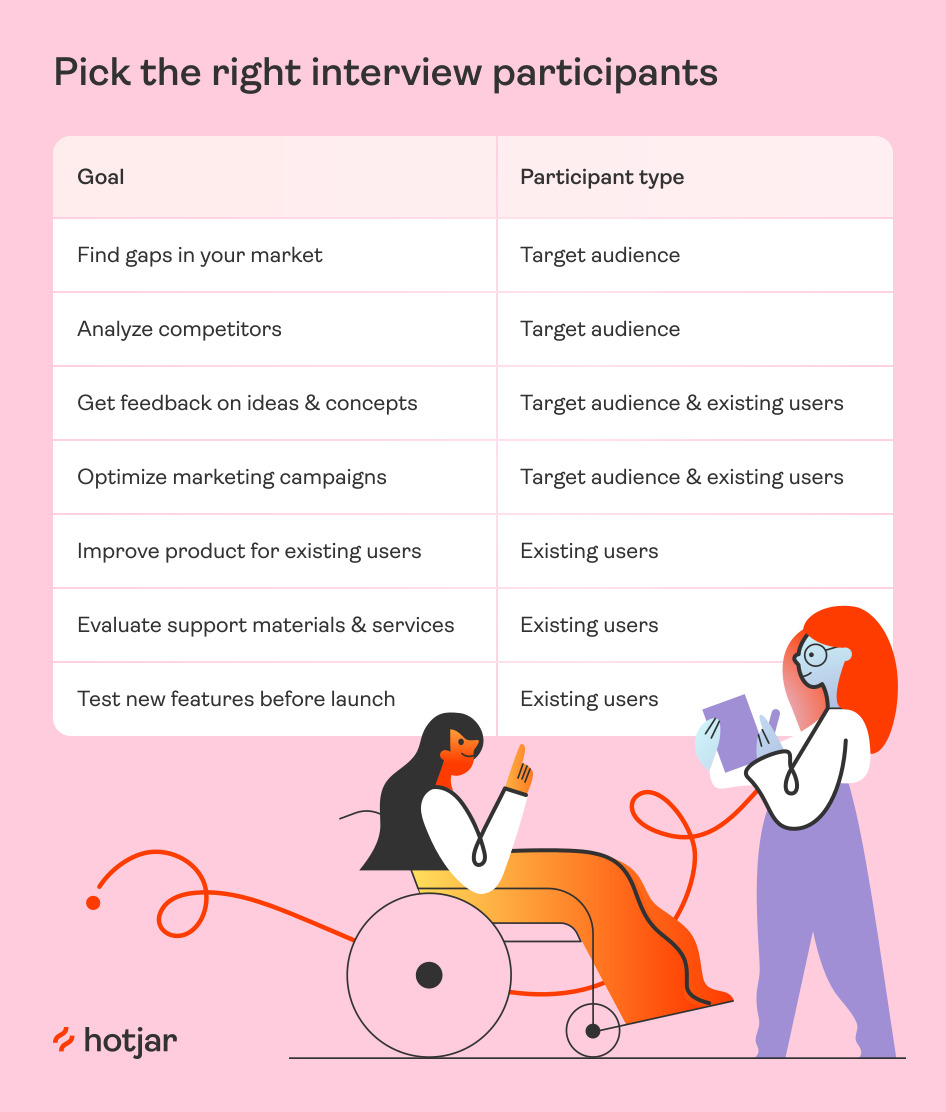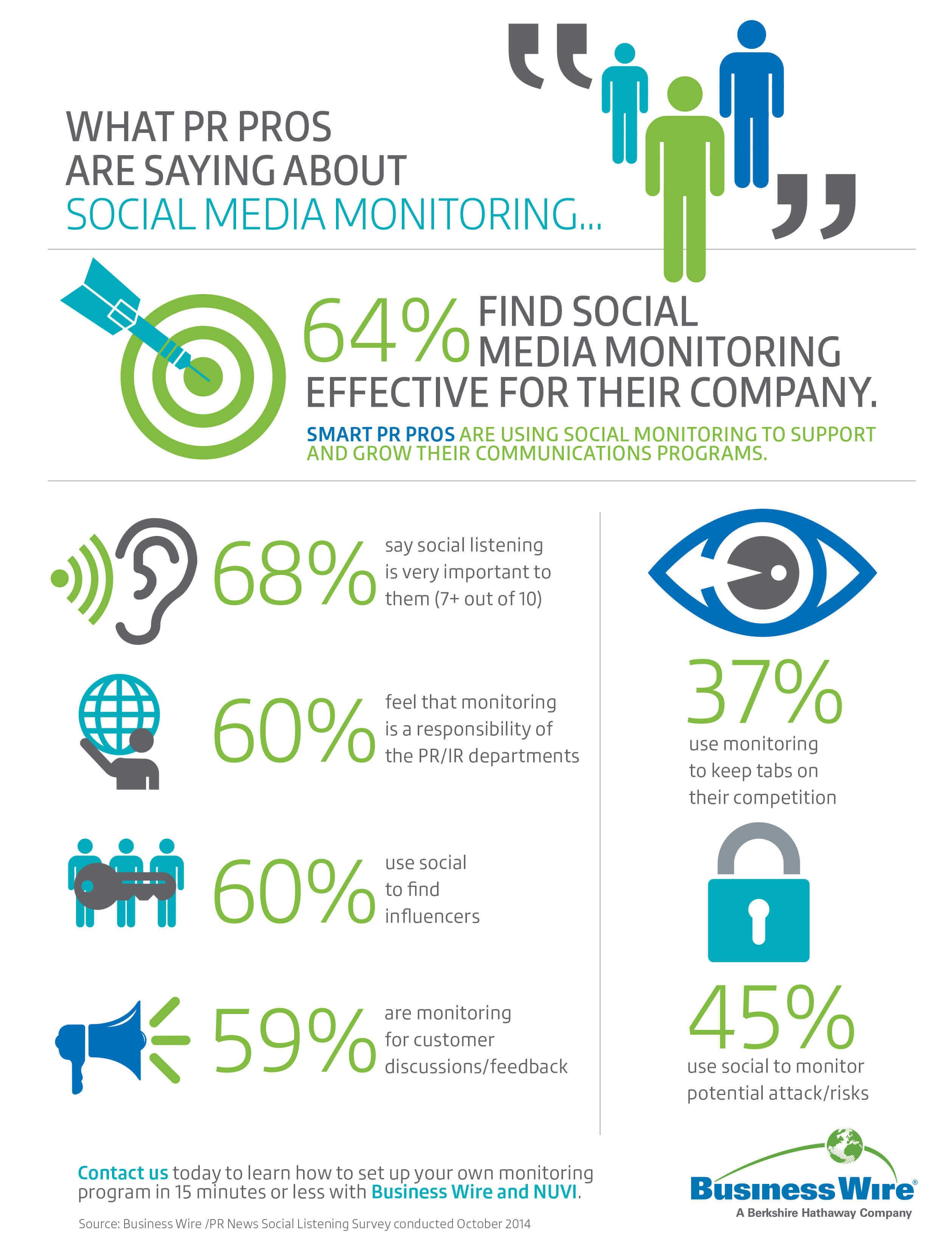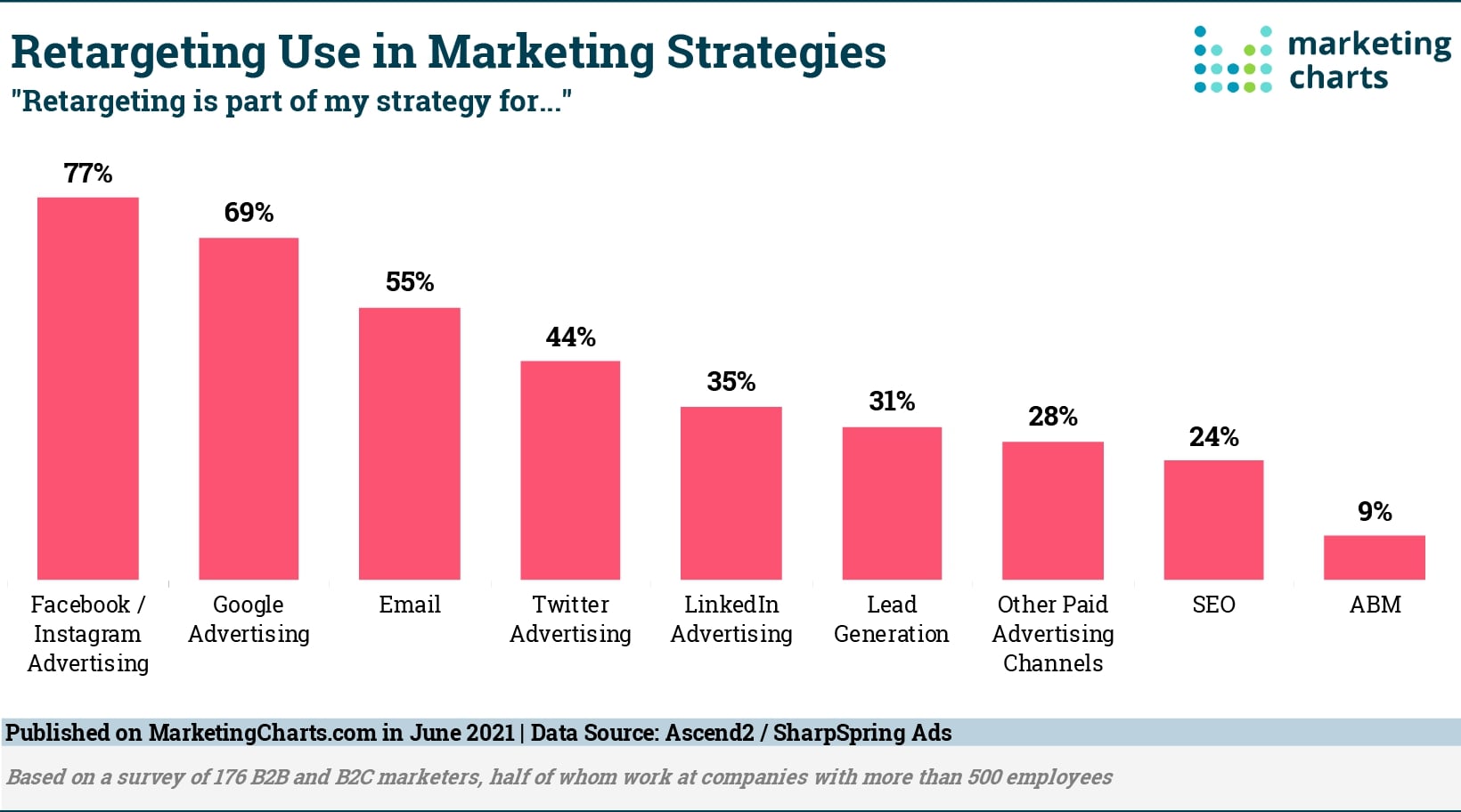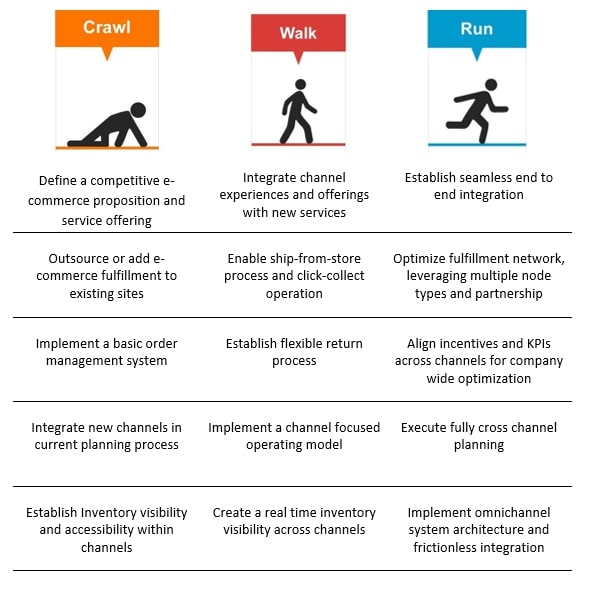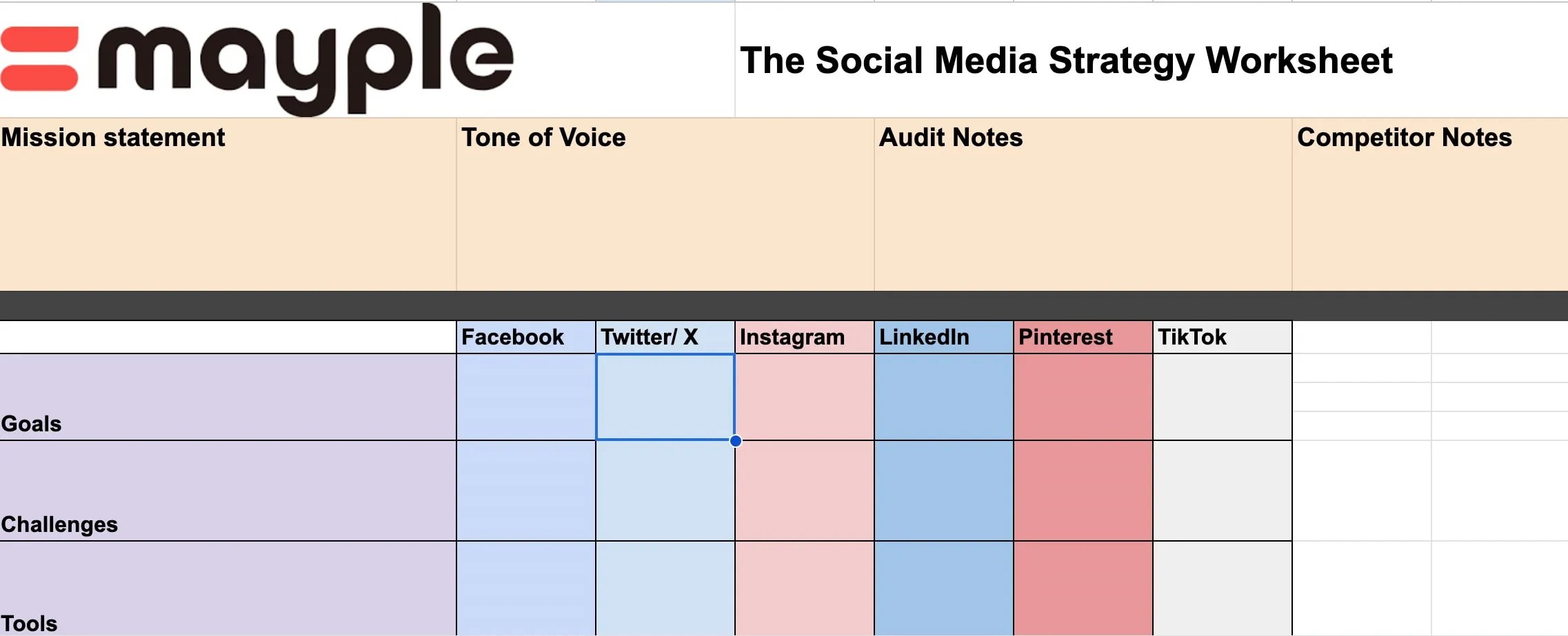How to Create a Social Media Strategy Presentation
After creating a social media strategy, you need to make the case to stakeholders and your team. Learn how to create a social media strategy presentation today!
Updated November 6, 2024.

In the early days as the first social media marketing hire at a design agency in 2021, I found myself thrust into unfamiliar territory, including creating a social media strategy presentation. I felt uncertain and clueless about what to do with the blank Google sheet the co-founder had shared with me.
I realized I was one of the many grappling with how to create social media presentations. This led me to learn that social strategy goes beyond having a content calendar, posting three times a day, or finding the best time to post.
In this article, I'll unravel all the steps you need to create a social media strategy presentation in 2024.
How to create a social media strategy presentation
Creating a great social media strategy presentation includes the following steps:
1. Set SMART goals
Goals help you track and measure your brand's social media progress and understand shortcomings in your strategy.
SMART Goals are popular for a reason: they work.
(Source)
According to the Sprout Social index, 60% of marketers in 2024 plan to connect the value of social to business goals by quantifying the value of social engagement in terms of potential revenue impact.
Take note of the term “Business goals."
But let me take you on a ride to the world of psychology first. If you want to give your brain a decent chance of meeting a goal, productivity folk wisdom insists that it better be SMART: Specific, Measurable, Achievable, Relevant, and Time-Based.
Here's how you set and document SMART goals when creating a social media strategy presentation:
Let's say your not-yet-SMART social media goal is to take your brand or client's online presence to a greater height in 2024. Let's make it SMART!
- Specific: "To a greater height in 2024" is a vague goal. Be more specific instead, like "Improve audience engagements by X% on all platforms, by the end of 2024, by creating content consistently."
- Measurable: Can you track your goals? Are there key performance indicators to ensure your social media content strategy gets you closer to your goal? If you want to take a brand's social media presence to greater heights, set benchmarks on things like engagement metrics or follower rates. So instead you could say: "10x social media presence by earning at least 200-500 monthly followers on Instagram, Facebook, and Twitter."
- Achievable: Goals are achievable when within the range of possibilities. Using the same example of boosting followers, if you know it's impossible to earn that number of followers within a month, come up with an achievable figure. The social media game involves consistency, persistence, and incremental improvements, so set goals accordingly.
- Relevant: The relevance of social media goals is a measure of the positive impact they leave on your brand. It can be a financial result, more visibility, or something tied to the fulfillment of your unique value proposition. So, before you document, ask yourself if each is goal relevant to your business's purpose. Is your social media marketing plan actually helping the business reach more potential customers and moving the needle on overall business goals?
- Time-based: "The end of 2024" is not specific. When exactly do you want to achieve your goal? For instance, maybe you want to reach out to 50 potential clients per month. That's a time-based goal, but still vague. A better version "I will send at least 12 cold DMS per week" gives you the kind of actionable insight into your strategy that business owners want to see.
2. Choose relevant metrics
(Source)
Goal setting doesn't determine the result. The results of your social media marketing efforts are the sum of your decisions and consistent execution.
And while taking these actions, bit by bit, you need to track them to ensure continuous improvement in your results.
“What metrics should I be looking at? What should I be tracking? How often should I look at Analytics?” are three key questions every good social media manager or social team asks themselves when penning down the metrics for a social media strategy.
(Source)
When choosing metrics, Andy Crestodina recommends two factors:
- The visibility of the metric – Is the metric easy to find? Is it available to the public? Do you need tools? Or do you need to research to uncover it?
- The importance of the metric – Does the metric correlate with business success? Is it likely to affect financial outcomes?
(Source)
Here are some relevant metrics to look out for in your social media marketing outcomes in 2024:
- Follower count/growth rate
- Likes
- Shares
- Awareness metrics (i.e. impressions and views)
- Referral traffic
- Conversion rates
- Click-through rates
- Cost per click
Remember that metrics vary from one business and one strategy to another. To get the best outcomes, focus on what counts: your brand's visibility and revenue.
3. Describe your audience
The next step in your social media strategy presentation planning is to describe your audience.
A target audience is a more specific term describing a particular group of people you're trying to reach with your social content plan.
Take audience research seriously. Bad audience targeting is the cause of many brand failures. Without a target audience in mind, you’re going to get little to no engagement on any social media campaign you launch.
To increase your social media marketing conversions, figure out who exactly is your primary target audience, what they want, what matters to them, and what are the sources of friction for them.
And if you say your social media target audience is “everybody” or “anyone interested in your services,” you don’t have much of a chance to boost conversions.
I like how, Rakefet Yacoby, CMO at Mayple puts it in an article on audience targeting:
“Your audience can be wide (e.g. if you sell napkins, everyone uses them, so your target audience will be quite broad) or it can be a narrow market segment (e.g. you might be selling makeup-removing wipes for people with a specific skin condition/type of skin).”
Describe your audience with these five simple questions:
- Who are they? Who are the people you're trying to reach with your content? Simple and Obvious question, but you'd be surprised how many businesses fail to answer it by either aiming for too broad or too specific of an audience.
- Where do they look to find information online? There's no point in publishing content on a social channel if your ideal audience isn't there.
- What are their biggest challenges or desires? Understanding your audience's fears and dreams makes it easier to present your solution.
- Pro tip 💡 Why. Conduct interviews to get an even better understanding of your intended audience. Choose three to five current customers and ask questions like "How did you hear about us?" and "What made you buy from us?"
(Source)
4. Conduct a competitive analysis
Competitor analysis is all about understanding your position in the marketplace about your competition.
As you conduct this analysis for your social media marketing, pinpoint who your competitors are. It's often helpful to compare notes with other team members, particularly in the sales or business development departments, who have often have insider industry knowledge. You can add parallel companies, who may not be direct competitors, to the list as well if their strategy has caught your eye.
Take an in-depth look at their posts on all of the platforms they use, noting content performance, what kind of content has the maximum engagement, their use of user-generated content, how much visual content they post, and so on.
Try to spot the strengths and weaknesses in their strategy. Seeing what works for your competitors can help you identify gaps in your strategy; the gaps in their strategy, meanwhile, are opportunities for you to shine. Now you're ready to make data-backed decisions with some serious inspo.
Here's how to conduct competitive analysis when planning your social media strategy:
- List your strong competitors
- Identify their social media strategy by observing their campaigns, how they engage with their audience, and the format and frequency of their posts
- Take note of their top-performing content. Is there a pattern in their highest-performing pieces of content? For example, are they in one specific medium (video, infographic, written content)?
- Find the Points of Difference (PODs): PODs are the features that are important to your prospects and not available from your competitors
5. Run a social media audit
A social media audit involves reviewing your business's social presence point-by-point. This includes performance metrics and future opportunities to grow and optimize your accounts.
With social media audits, you can sieve out irrelevant tactics and get concrete answers to your troubling questions.
Here’s how to run a social media audit in five simple steps:
- Document and take an inventory of all your brand’s social media profiles. This includes every platform where you have a business presence of any kind – yes, even that Facebook page that's been neglected recently. Ensure the consistency of your marketing messages and note the follower count for each profile.
- Look at the analytics dashboard of each profile to find the percentage of impressions, likes, new follower count, and clicks. You can also use a social media analytics tool like Sprout Social. With these analytics reports, you can dig into your demographic data, geographic data, and company data.
- Note your social media brand style and assets. One of the most important steps in a social media audit process is to check the styling of your posts, color, consistency of brand style, and your bio. Your brand assets on social media including your link in bio must correlate to your unique value proposition.
- Analyze your top-performing posts and marketing campaigns, and try to find out why they performed so well. Document the reactions of your audience to those posts and find out how you can work on future posts to get the same results.
6. Include social media listening notes
Listen first. Talk later.
What are your customers saying about you? Social listening is the practice of monitoring social media channels for mentions of your brand, competitor brands, and related keywords.
Monitoring conversations and discussions around the industry gives you important insights about what’s working, and what’s not, for your target audience.
One tactic is to join communities where your target audience hangs out and listen to what they're saying about your competitors and the different solutions offered in your industry. You can also swipe through comments on your posts or mentions of your brand and pick through the good and bad reviews.
Use audience research tools like SparkToro to find topics your audience is discussing, discover relevant influencers in your niche, and see which websites your target customers hang out on.
(Source)
7. Talk about the chosen channels
There are many social channels you can choose from: Facebook, LinkedIn, TikTok, YouTube, Twitter, Reddit, and more. Prioritize identifying the right channels for your business when deploying organic social or paid social marketing.
There's been a lot of debate surrounding the maximum number of channels that should be chosen by a brand. The rule of thumb is to stick to what you can manage, optimize, and analyze.
Social media platforms with a high population base don't cut it if your audience doesn't reside there. For example, Facebook is the most used social media platform in the world in terms of monthly active users (MAUs). Over 3 billion people log into the platform each month. But if they're logging on to stay in touch with family abroad, they're likely less receptive to brand messaging that would work on, say Linkedin.
So if you're targeting C-suite leaders and professionals in different industries, Facebook impressive stats won't be relevant to your digital marketing strategy. Don't forget to make this important point in your social media PowerPoint presentation.
8. Explain paid media involvement
During economic downturns, companies that focus on social media growth plan investments tend to outperform their rivals when markets recover.
Social media ads let you invest money into different social media channels to increase your brand awareness and revenue. Your paid media efforts can fall into three content pillars or buckets per RefineLabs on the philosophy of Paid media:
- Product ads: These ads specifically tout the product/solution in some way and drive directly to a declared-intent page on your website.
- Content: These ads are primarily focused on fostering education and awareness at a higher level and may drive to a thought leadership blog post, third-party article, or other lower-intent content piece.
- Social proof: These ads specifically aim to affirm prospective buyers by highlighting case studies, ROI data, and/or industry recognition.
Explain each of these buckets, with a budget breakdown to explain the cost of each paid media practice (more on that next!).
(Source)
Need to make sure your social content is on point? Hire a Mayple-vetted social media content freelancer. Just get in touch with us and we'll match you with the perfect one.
9. Do a budget breakdown
Did you know that the average US organization spends anything between $72,000 and $126,000 on social media services?
Even in the low range, that's a lot to leave to chance – if you don’t want to waste money, that is. This is precisely why building a sensible social media budget is crucial to your success.
A social media budget can help you set the right goals, expectations, and KPIs for your organization. With a budget in place, you know exactly what your organization can afford to do and how much it will cost. Include:
- Costs associated with advertising, including pay-per-click campaigns and sponsored posts
- Fees for the use of paid social media management tools
- Costs associated with content creation, such as contracting freelance writers and graphic designers
- Fees for influencer campaigns
- Costs associated with analytics and reporting tools
- Any other expenses related to the social media activities of your organization
10. Show inspiration
Be sure to include in your social media marketing strategy presentation examples of successful strategies that you're looking to mirror. Successes can be broken down into factors such as general strategies that make big brands win, or the consistency of their approach.
No brand is an island. Every strategy that exists today has always been around in one form or another. So use other brands as inspiration. And as for you, the leader of social media marketing operations, you can strive to be an inspiration to your colleagues.
Here are three ways to show inspiration:
Success stories
The social media marketing success of a brand is never an accident. It's a sum of goals, executions, plans, and consistency. And maybe a bit of luck here and there, just kidding.
One of the best ways to convince the C-suite leadership at your brand that social media marketing works is to show them success stories. With these stories, they can believe that these strategies and frameworks have worked.
But you must bring clarity at this point of your presentation:
- Note the success stories of brands ahead of you and make it clear that patience is key to getting these results.
- Don't overframe the early results of a brand. Yours might not be the same. So, make sure every story is achievable and believable, yet convincing.
You can get success stories from:
- Meta, on Advertising success from various brands
- Drum, on social media success stories and case studies
- MarketingSherpa, 1789 marketing case studies and counting
For example, Sprout Social did an in-depth analysis of how Duolingo rose to fame using TikTok. Looking for similar examples will help you make your case in front of the leadership, get their buy-in, and get approval for your budgets.
(Source)
Awarded accounts
Check award-winning accounts in your niche to serve as inspiration and motivation for your brand to build systems that result in successful outcomes.
Favorite brands
Highlight your favorite brands in terms of where you want to be or that get outstanding results. These brands can serve as references and motivation.
Identify areas where they dominate your presentation document. Ideally, it'd be great to make a list of these brands based on their dominance on each of your preferred channels.
11. Explain the division of responsibility (Explain the “Crawl, walk, run plan”)
Division of responsibility is one of the keys to success in an organization, especially when you are not a one-man marketing team. Just as every child progresses from crawling to walking and then running, lead your social media marketing team to each of these phases via coaching, teaching, and mentoring.
The crawling approach would be explaining to your team the why of your social media strategy. Review every step of the process and their roles throughout.
So, for example, you can explain to your founder or C-suite team their social media roles, and why it's important to take LinkedIn posting seriously. You can provide the steps to take to ensure they authentically support the company brand using their personal brand.
Then use the walk approach to supervise the first set of executions. You can help with post scheduling and supervise content creation for all profile pages, especially if an in-house team member or freelancer handles it.
In the run phase, your team is fully functioning with the social media marketing practice. They operate with greater confidence and at full speed, under your regular supervision.
This is an example of a crawl-walk-run framework for an eCommerce business:
(Source)
12. Create a content calendar sketch
A content calendar helps you with efficient workflow and a consistent posting schedule.
I spoke to Susan Anderson, an editorial director with decades of experience handling content publishing, and she listed a couple of steps to create a content calendar sketch.
Firstly, she believes that it's key to understand your audience and your content creation capabilities.
She also highlights the benefits of knowing your asset library and keeping things simple and clear. Start by either creating a Google spreadsheet, or using project management tools like Trello, Airtable, and Notion
Then add columns that include:
- Topic/pillar: the topic for each social media post and content
- Content formats: for example video, image, carousel or podcast
- Frequency/Time of posting: Keep this realistic and relevant. You might want to leave Saturday and Sunday out from the calendar, for example
- Keywords (if you're aiming for SEO) and hashtags: note down keywords and hashtags relevant to your industry. Input these keywords in your post so your content can get more traction
- Channels: Write down social media platforms where you'd be posting your content
- Working/finalized title: A headline for every post
- CTA: Plan the action you want your audience to take after they consume your post
- Date to Publish: Write down the expected date of publishing each post
- Status: Make a status section for each post, from ideation to publishing
- Notes: If you have brief notes of insights for your team, add them!
Pro tip: If you want all of this taken care of for you, consider our list of top social media managers for hire.
Best practices for a compelling social media strategy presentation
Now that you have the plan nailed down, here are some best practices for a good social media strategy deck:
Build a natural flow
Structure is everything in presentations. If you don't organize your goals, frameworks, and strategies hierarchically, you'll be unable to convince your executives. The first step is building a natural flow, ensuring that every part of your social media marketing strategy makes sense to the preceding point.
Use a mix of text, images, illustrations, and tables. If you are not speaking out loudly while presenting, make sure you make your presentation easy to read and understand.
Leave room for Q&As
Give room for questions, corrections, and suggestions. Executive leaders may have concerns, reservations, and skepticism about certain strategy elements.
With these Q&As, clarification on aspects of the social media strategy that may not be clear would be more clear. After your presentation, ask questions like: how can we improve our strategy? What do you think is missing in this strategy?
Use enticing graphics
Your social media strategy doesn't have to be a long block of text on a big table. You can use illustrations and graphics to explain terms like audience journey mapping, buyer persona, and content creation.
Looking for a social media strategy template?
We got you. Check out our free social media worksheet. It includes everything you need to turn your 2024 social media marketing strategy into a winning one.
Leave room for experimentation
We thrive in an ever-evolving landscape and trends come and go. Emphasizing experimentation signals that you are committed to learning and innovation. You can discover new and unexpected opportunities for engagement, follower growth, and conversion rates.
Keep it simple
Prioritize the most important things. Don't complicate your presentation, keep the structure simple and clear. Otherwise, no matter how great your social media marketing plan is, it might fall on deaf ears.
The best social media marketing presentation starts with the strategy
Your social media marketing presentation needs to be more than just a pretty slide deck. It needs to be grounded in a solid strategy that aligns with your business goals.
Social media marketing goals, social media metrics, the types of content you choose to publish, and every social media post itself should all be rooted in one question: how do you reach your ideal customer, get their attention, and make them love your online presence so much they buy from you?
If you need help drawing up an efficient social media marketing strategy, reach out today. We can match you with a vetted social media marketer with experience in your industry, audience demographics, and the specific type of social media efforts you want to employ.
